Brand Social Trend Report: Q1 2025
These are the posts that stuck out, the formats that took over, and the themes that felt inescapable.
If this is your first time receiving one of these reports, welcome! This isn’t your usual graphs and stats report. Think of this like the scribbled notepad version of the trends you’ll eventually end up seeing in all those graphs and stats reports in six months. It’s like getting early access. A little bit of science and a whole lot of gut—kind of how I approach social strategy in general.
The Brand Social Trend Report: Q1 2025 covers things like:
The two words that kept coming up in strategy conversations
Brands finally figured out how to retain in-house creator talent
Influencer fatigue (and the reaction to it)
How social teams are using AI
The platform that a surprising amount of brands joined
Hopecore
What it felt like to work in social
There are also contributions from smart people working at places like The Washington Post, Duolingo, Day One Agency, and more. Let’s dive in.
Fewer, Better
I couldn’t escape conversation about “fewer, better” this quarter. Brands are no longer wanting to play the quantity game on social platforms. Instead, they are focusing on ways to create smarter, more intentional content—even if that means fewer posts going up.
I heard it on client calls. I heard it in newsletter sends with Marissa Hoffman, Creator Marketing Manager at Hinge, and Alex Kalatzis, the Director of Marketing at Tower 28, who both mentioned “fewer, better” verbatim. I read it from other strategists, like Guillaume Huin, Senior Marketing Director at McDonald’s, writing “The question is always : do we have something to say or do we have to say something. If it's the latter, stay quiet - no one wakes wondering what will McDonald's post today.”
I think we’ll see more brands step back and reevaluate just how far posting a lot has gotten them, and instead rally behind “fewer, better” posts.
Influencer Gifting Built to Be Filmed
This quarter my feed was filled with awkward videos of influencers filming people in costume delivering influencer packages from brands. I had to rewrite that sentence five times because it’s almost too ridiculous to sum up.
DSW sent a mime. The Bar sent a shirtless man with flowers. Heaven Mayhem sent a man in a tuxedo. Kiehl’s sent a White Lotus “employee”—the top comments are “The poor guy had a panic attack HAHAHAHAHA” and “Omg poor guy he was so nervous!”.
Do consumers actually enjoy watching these videos or is it just another stunt to make sure influencers will actually post the gifting? My gut says the latter.
A New (and Nuanced) Approach to Understanding Gen Z
This trend is contributed by Eli Williams, Senior Director, Creative Strategy at Day One Agency.
I’m seeing (and welcoming) more nuanced and intellectually rigorous discussion around Gen Z. Rachel Janfaza’s bifurcation of Gen Z into sub groups sparked a flurry of welcome think pieces. Kyla Scanlon took it further, arguing that there are really three Gen Z’s, all of whom have different relationships with technology and visions for economic mobility, and Sean Monahan argued that generational demarcation lines are completely arbitrary and need to be rehashed. Plus, the profiles on the pepperoni-faced henchmen going Tanya Harding-mode on the U.S. government, and an exploration of the burgeoning media apparatus formed around younger, more conservative (and female-led) voices.
Every panel I’ve been on or seen, someone says “Gen Z is not a monolith” and then follows it up with a blanket statement about what an entire generation supposedly values (something usually like “being unapologetically purpose driven,” or whatever that actually means). I think marketers will need to work harder and dig below the surface. That Gen Z trend report is probably wrong.
Influencer Fatigue
This quarter we all witnessed a shift. Influencer activations that might have worked last year, felt wrong in the current landscape.
Poppi gifted vending machines and The Ordinary sold eggs. Meanwhile, users posted about their general frustrations with influencers. The vibes were off.
Some brands are getting ahead of it. Waterboy is letting influencers bring a follower as a guest on their next brand trip. Cocokind is hosting another “community trip”. POV Beauty sending 10 followers their PR mailers and keeping them on the gifting list for the entire year.
Anime Is Everywhere
This trend is contributed by Byron Stewart, Associate Director of Social Media at Team Epiphany and author of TAPPED IN.
Anime is no longer a niche interest, it’s a full-blown cultural force. Brands are waking up to the fact that what used to be a subculture is now mainstream—mainly driven by Gen Z’s love for the genre. They've recognized its global reach and how it’s influencing everything from fashion to sports.
MLB and Demon Slayer collaborated on an animated short. The Los Angeles Lakers collaborated with the popular series One Piece. Palace released a collection with Death Note. Duolingo posted this.
Brands Figured Out How to Retain In-House Creator Talent
This quarter we saw media companies like Morning Brew and The Washington Post strike deals with their social hosts that treats them more like talent than employees.
Over at Morning Brew, comedian Macy Gilliam, who I interviewed here, went from employee to creator under her new contract. According to The Publish Press, “Gilliam and her reps at UTA negotiated a creator contract with Morning Brew that nearly doubled her compensation. It includes a cut of all show revenue, from merch to advertising, that can increase based on video performance.”
Meanwhile, at The Washington Post, Dave Jorgenson is now publishing—in addition to his work on The Washington Post Universe—a Post-produced news series on his personal channel. It’s called Local News International and has over 70K subscribers.
Two years ago I called out the trend of social managers becoming the “face” of brands on platforms like TikTok and suggested talent contracts be put in place. This is a significant move for our industry.
Flip Book Carousels
This trend is contributed by Dave Jorgenson, Senior Video Producer for Washington Post Universe at The Washington Post and Host and Creator of Local News International.
My Instagram feed has completely transformed to reflect my relatively new status as midwestern dad of a toddler. This means I’m pretty much just getting Costco finds, Ms. Rachel, and Bluey. While Ms. Rachel is obviously blowing up all over Target, Walmart, and Netflix, I feel as though Bluey is not getting enough credit for its worldwide takeover. They also have an exceptional Instagram account in my opinion. It’s playful and fun and relevant, just like the show.
So that brings me to the trend: creating a flip book of photos. It’s so simple but so fun. I don’t know if I’ve seen it elsewhere? Maybe it’s been everywhere but all the “Costco finds” accounts on my feed have obscured it. I don’t know. But if it is new, I expect to see it popping up more, including from our account, Washington Post Universe, to show off our really original animations by Hannah Good.
[Editor’s note: you can find more examples here and here.]
Food in Fucked Up Places
Cottage cheese in the center console. Dip in the fridge shelf. Queso in the cupholder. Milk in the glove box. Brands put their ingredients in unexpected places this quarter.
Platform Diversification
This trend is contributed by Mitch Goldstein, Social and Digital Marketing Consultant.
Largely in response to the whiplash of "is TikTok going away or not" lots of brands took stock of how they reach their audience across platforms. In response, we saw more brands experimenting with new platforms, formats, or tactics to keep in touch with their followers. From brands creating content specific to Close Friends on Instagram to launching new editorial channels via newsletter platforms like Substack, we saw a lot of new experiments in both maintaining community and cross pollinating content to try and keep followers engaged on as many platforms as possible.
As followers spread to other corners of the internet, brands are choosing how and where to keep in touch with them, from one-to-many broadcast channels to smaller direct conversations in DMs and Discords.
Brands Wrote a New Strategy on Substack
Around a month ago, I wrote about how I got my first Substack strategy consulting inquiry and did a deep dive into the brands that were already on Substack. At the time, there were about six brands that I could find. Since then it’s been wild to see how many more have joined—with big companies like Allure and Rare Beauty among them. I know a few more that are already on the way.
Substack isn’t a short-form social media platform (whether text or video), so it’s especially noteworthy that so many brands are committing to a more long-form editorial strategy. So far The Real Real wins for “most opens and clicks” from me…and apparently others too. They recently told Vogue Business, “…in a recent issue, for example, 12% of readers clicked on the last link in the article. A 12% click-through rate would be good on its own, but that’s just on one link 900 words deep.”
Posts That Feel Like Dial-Up
This trend is contributed by Dejaih Smith, Senior Social Community Manager at Sony for Jeopardy & Wheel of Fortune, Writer/Trend Analyst for Silence, Brand!, and Virtual Columnist for Pretty Little Marketer.
Word art fonts that looked like they crawled out of a 2005 PowerPoint presentation and Microsoft Paint graphics so bad they're actually good. Brands are basically saying, "Hey, remember when life was simpler and we all used dial-up?" While it feels like a hug from our childhood—when we look back on the 2020s, will it just look like we reheated 2002’s nachos?
Did Brainrot Memes Change Sentiment Around AI?
This trend is contributed by Adam Faze, co-founder and “Head Coach” of Gymnasium.
AI content has taken over my feed. We went from artists getting cancelled for using AI to AI being the most liked videos on my feed faster than I could have possibly imagined. All it took was it being used to create brainrot memes like this and this.
Brands Started Dabbling with AI-Generated Images and Videos
It’s happening. Brands are using AI on organic social. The sloppiest? Balenciaga’s elephant video. The most surprising? Crown Affair’s cat post. The most believable? SET Active’s burnt toast. The most consistent usage? Fazit.
You all already know how I feel about it, but it’s the first quarter I’ve really noticed it on organic brand channels and that’s noteworthy.
Characters Took Over Chain Restaurants
This trend is contributed by Kelsey Dempsey, Social Media Content Creator at Duolingo.
A new TikTok trend features AI-generated videos showing hundreds of animated characters taking over chain restaurants like McDonald’s, Taco Bell, and more. The videos compile exaggerated scenes of characters eating, running through kitchens, stealing food, using the bathroom, and causing chaos. While AI art isn’t always something every brand can engage in, we’ve actually started creating surreal 3D Rigs that help emulate the same experience with our Design Studio team. There’s clearly a content desire for surrealism and we wanted to bring it to life with our content. We released our first video and it got over 10M views across channels!
The Message Was The Medium
Brands used actual objects to convey specific messages. J.Crew used a keychain to announce their catalog archive coming back. Rhode used a clothing patch to announce their Los Angeles pop up. Vogue announced a vintage market with a library slip.
The Pendulum Swung Back
This trend is contributed by Emily Heyward, Co-founder and Chief Brand Officer at Red Antler.
Everything old is new again! After years of brands embracing raw, UGC-driven aesthetics to fit in better on social, we’re now seeing a burst of big-budget, cinematic storytelling. Brands (like Burberry and Late Checkout for example) are building immersive worlds with recurring characters, familiar movie-star faces, BTS on-set interviews, narrative arcs, and filmic techniques designed for short-form content, proving that the pendulum is always swinging and high production value is finding its way into the scroll.
The Close Friends Tease
This trend is contributed by PEOPLE BRANDS AND THINGS.
Brands have traditionally prioritized the ‘launch’ and ‘amplify’ phases of social campaigns, but Q1 was all about the ‘tease’—using Instagram-native features to build both hype and community.
Away did this by giving their community an exclusive first look at their Translucent Collection via their Close Friends list, offering early access to campaign imagery and shopping. MAC Cosmetics did the same with their Nude collection, revealing products to Close Friends before the public launch.
This not only deepens brand connection through exclusivity—making followers feel extra special—but also fosters community at the same time. We’re excited to see how this evolves in Q2!
[Editor’s note: I also loved how Nike surprised followers by adding them to Close Friends and asking for gifting info. I think we’ll be seeing more Close Friends strategies this year!]
Brands Continued To Get Sued for Using Trending Audio, Solutions Started to Pop Up
Yes, brands are still getting sued for using trending audio. Now we’re seeing a few solutions start to pop up. There are companies like Cipher that are attempting to help brands (quickly) get rights to trending music. They told me, “Since launching in January, agencies like Edelman, brands like Pepsi, and startups like Multiply Labs have used Cipher to source music for their content.” Meanwhile, Alex Mill has been using a music supervisor to get the rights to songs and re-record them. They’ve done it with “You’re The One That I Want” and most recently “We Go Together”, both from Grease.
Brands Are Rethinking How They Talk About Their Values
This trend is contributed by Callia Hargrove, Founder & CEO of Backstory Consulting.
In 2020, most brands recognized the value of being loud and proud about their values on social media, but in 2025, that seems to be changing. With the world around us shifting at warp speed, many brands are unsure of how to align their values to the moment.
At Backstory, we've identified that most brands fall into one of these three buckets when it comes to how they're approaching talking about their values right now: Doubling Down, Treading Lightly, or Rolling Back. I'm curious to see how this strategy shift will impact audience engagement as the year progresses.
Hopecore
This trend is contributed by Shelby Jacobs, Strategy Director, Social and Content at TBWA\Chiat\Day.
Hopecore is showing up in several different ways which is so fun: there’s “girl who is going to be okay”, the “this and a ______” trend, and then true hopecore with the videos of nature soundtracked by a monologue.
It feels like users are romanticizing small moments in life as a coping mechanism to the world around us falling apart. Things aren’t just falling apart IRL, but online too. Digital spaces are changing to support business initiatives, new innovation—and then there’s the general overtaking of what once were digital utopias with AI slop and literal nazis. Instead of earnestly lamenting these changes, hopecore leans into absurdity, usually in the script and visual choices. We’ve replaced toxic positivity with self-aware confirmation.
The Vibes of Working in Social Were Not Great
Working in social media will always be a roller coaster. This quarter felt like one of those rickety roller coasters that gets shut down because it’s so unsafe. I think all of us questioned if we wanted to stay on the ride. Between the potential TikTok ban, the visibility of the billionaires who run the platforms we rely on for a living, and just the usual chaos…it all felt bad. I wouldn’t be surprised if this leads to an uptick in burnout. At least we have good memes.
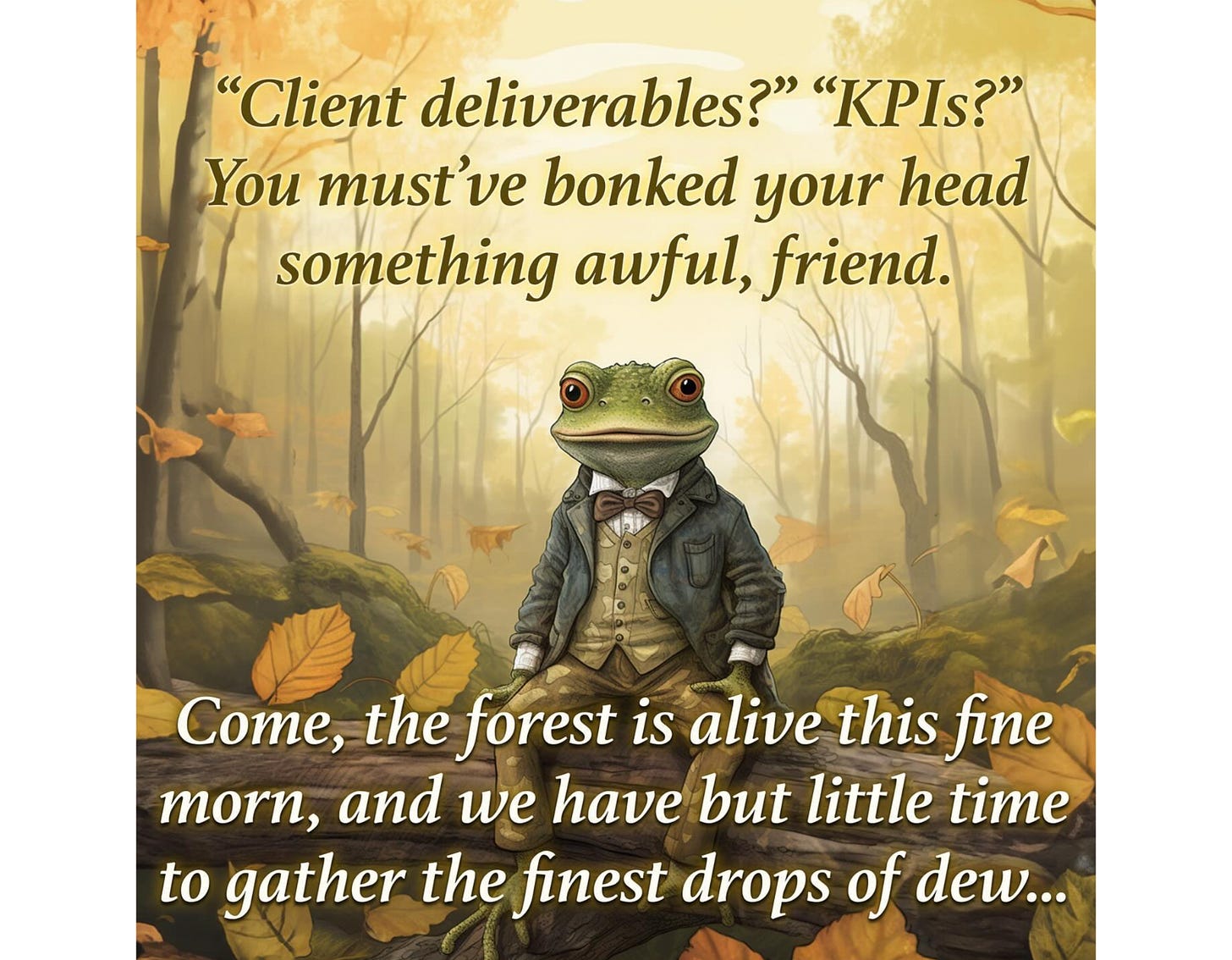
Thanks for reading! If you made it this far, it means you’re a paid subscriber and get access to the Link in Bio Discord. You can join here.




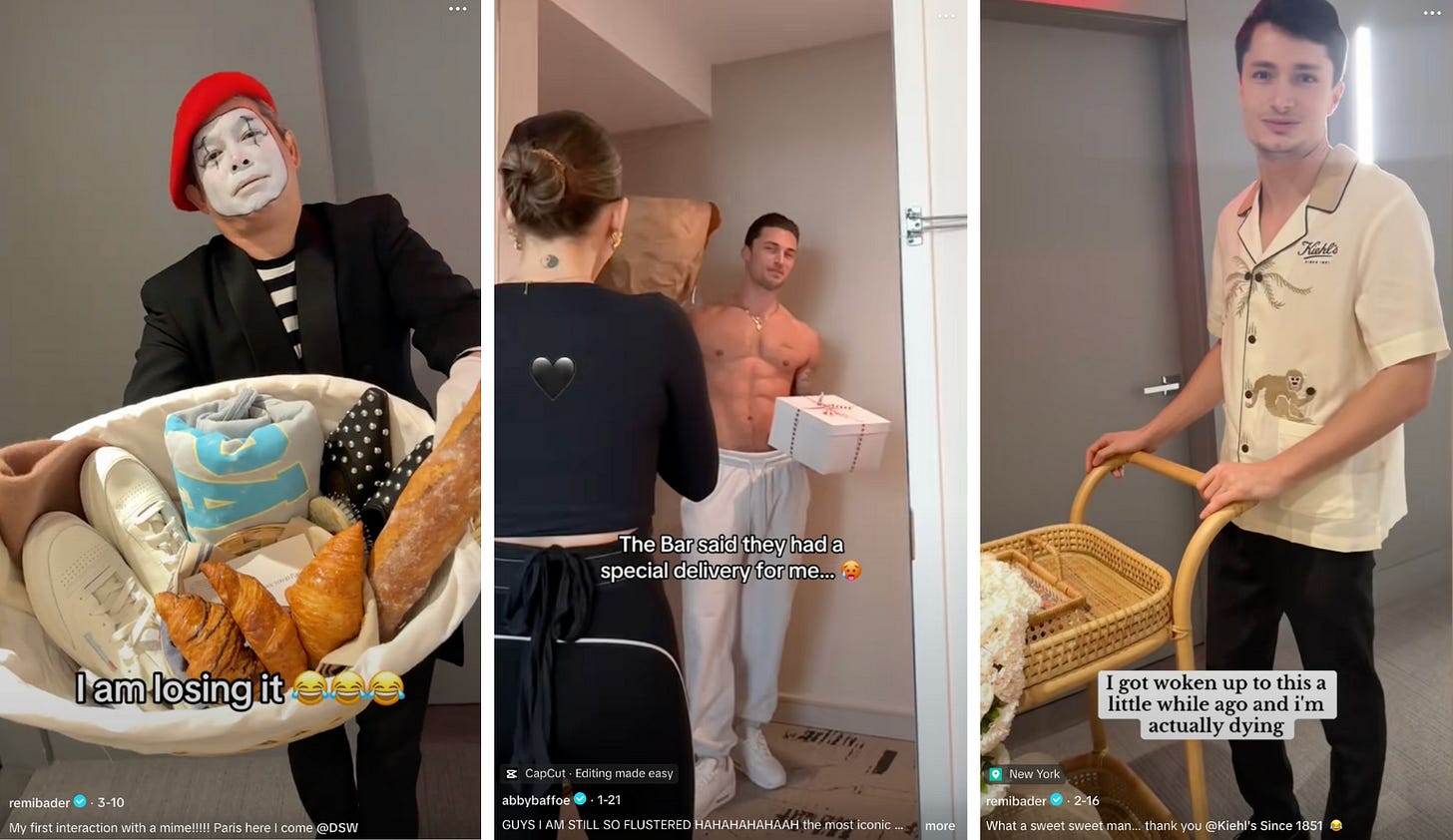

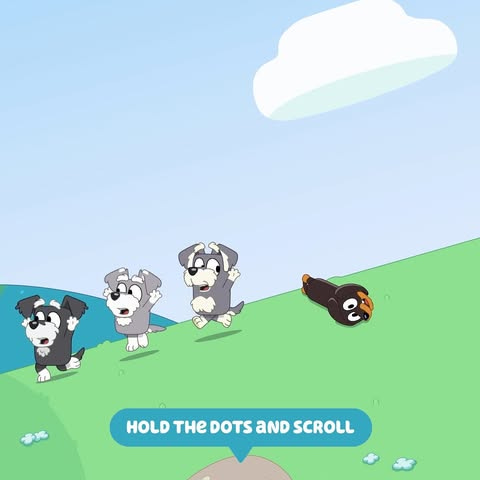
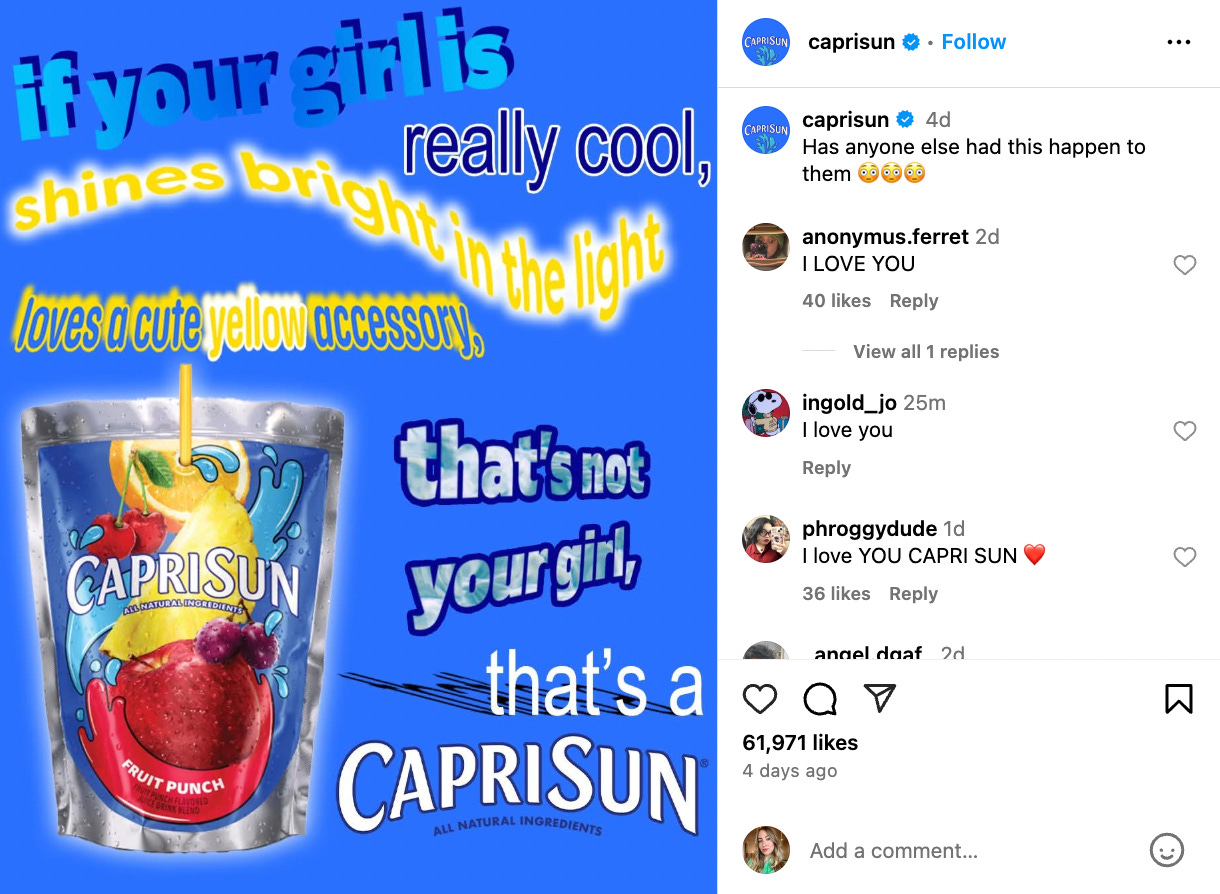
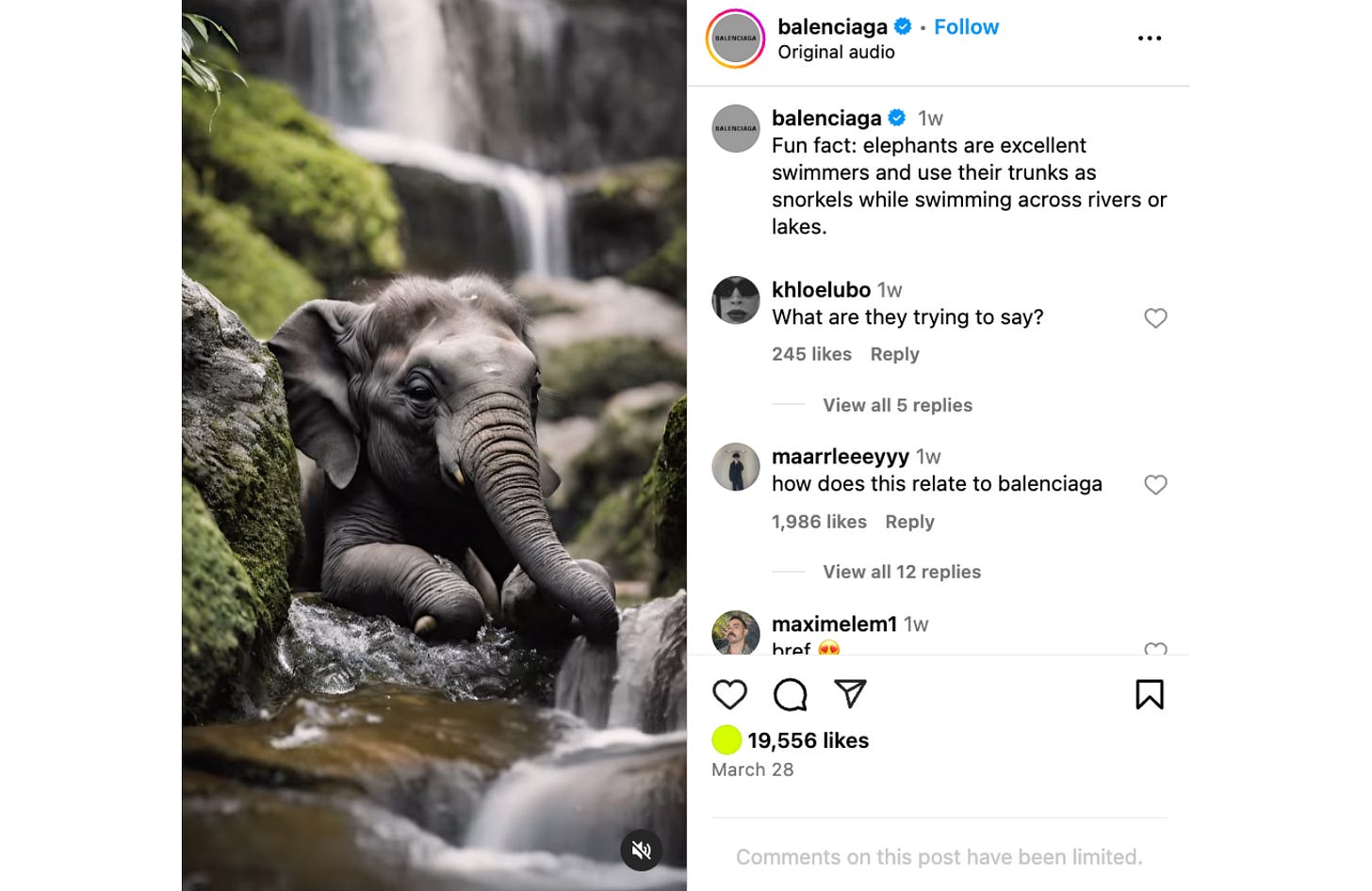
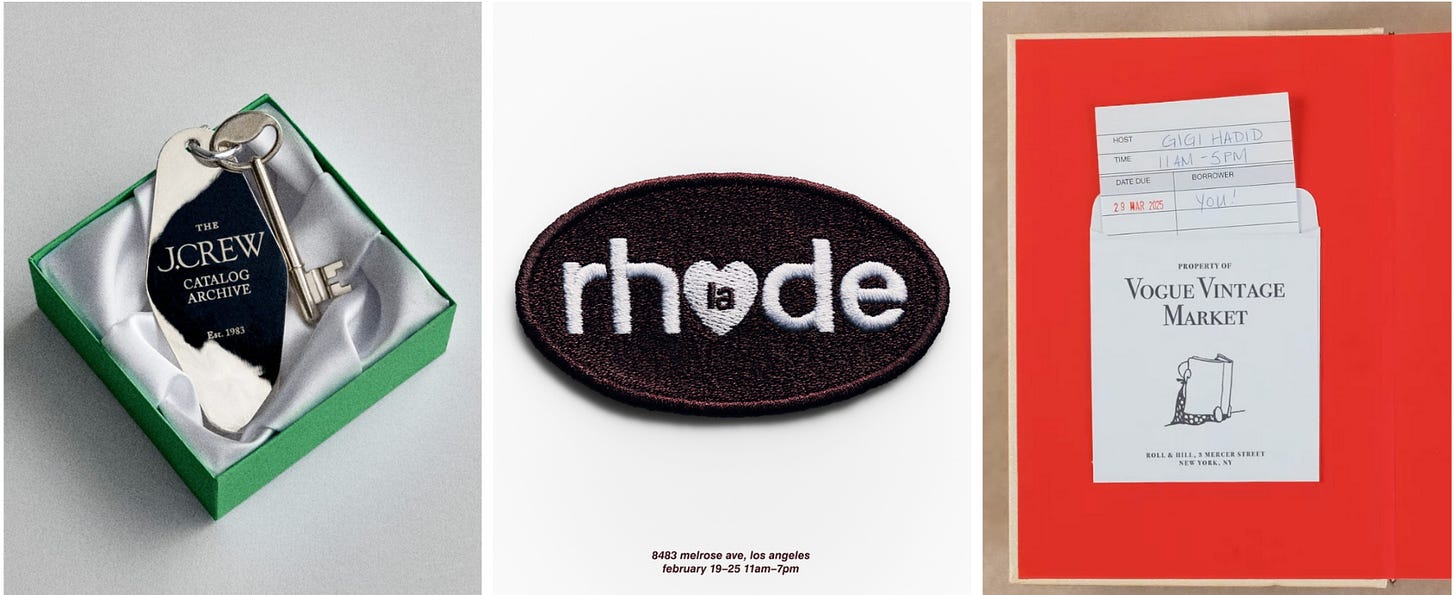

"It feels like users are romanticizing small moments in life as a coping mechanism to the world around us falling apart."
Phewwww ain't this the truth?!
always filled with a dose of inspiration and several internet rabbit holes to fall down after these reports, thanks so much Rachel!!